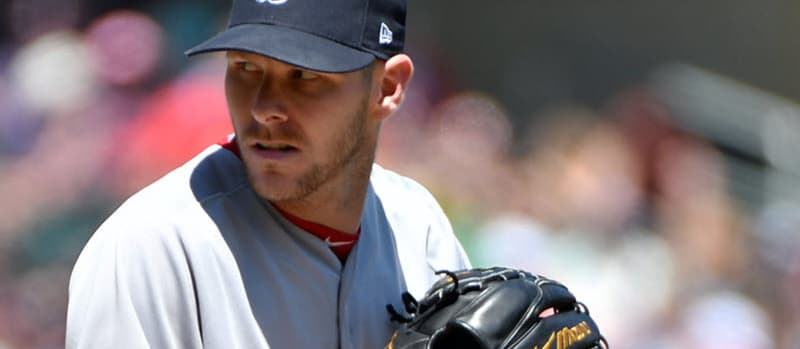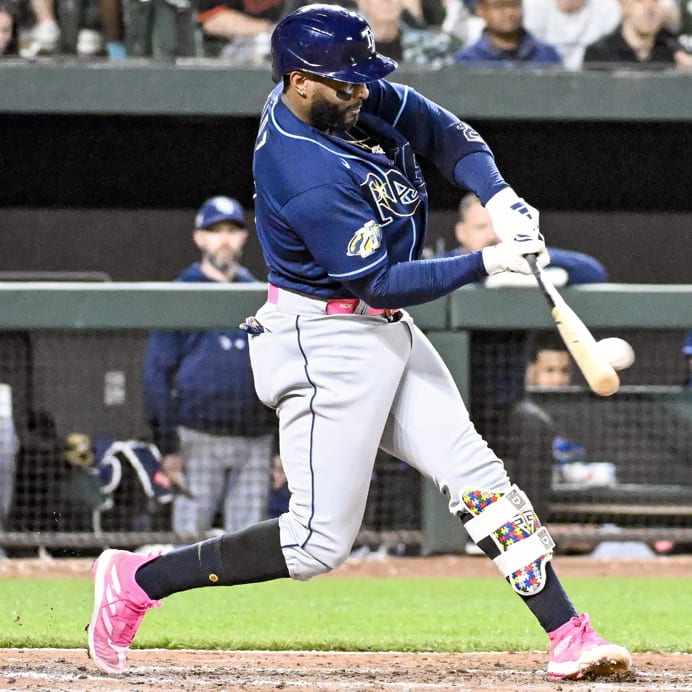This article is part of our The Z Files series.
Here are some thoughts, observations and a couple of warnings as we head into the second mile of the marathon MLB season.
Perhaps I'm blinded by too many duck boat parades or just naively trustworthy, but I still don't believe there's anything physically wrong with Chris Sale. It's clear Alex Cora's slow-playing of the rotation in the spring has the defending champions' starters a couple weeks behind most of the league. It remains to be seen if this costs Boston in the end, though the surreal bad luck the Yankees have endured helps. That said, the Rays aren't going anywhere, shaping the AL East to be a very intriguing race to follow. The Cubs went through this after they won the World Series and their rotation wasn't right for most of the first half. I suspect the Red Sox will be up to speed by mid-April as the approaches are a little different. I would have preferred a normal spring then finding times within the season, aided by the extra off days, to stagger rest for the starters, but what do I know? From a fantasy perspective, I'm holding Red Sox pitchers, while looking to acquire them from a panicking competitor.
Put me on the aggressive side when it comes to spending early-season FAAB, in both mixed and league-specific formats. One reason isn't ground-breaking analysis; you get the player for almost the whole season. Just as importantly, it hurts to be complacent, assuming you'll be fine when your injured
Here are some thoughts, observations and a couple of warnings as we head into the second mile of the marathon MLB season.
Perhaps I'm blinded by too many duck boat parades or just naively trustworthy, but I still don't believe there's anything physically wrong with Chris Sale. It's clear Alex Cora's slow-playing of the rotation in the spring has the defending champions' starters a couple weeks behind most of the league. It remains to be seen if this costs Boston in the end, though the surreal bad luck the Yankees have endured helps. That said, the Rays aren't going anywhere, shaping the AL East to be a very intriguing race to follow. The Cubs went through this after they won the World Series and their rotation wasn't right for most of the first half. I suspect the Red Sox will be up to speed by mid-April as the approaches are a little different. I would have preferred a normal spring then finding times within the season, aided by the extra off days, to stagger rest for the starters, but what do I know? From a fantasy perspective, I'm holding Red Sox pitchers, while looking to acquire them from a panicking competitor.
Put me on the aggressive side when it comes to spending early-season FAAB, in both mixed and league-specific formats. One reason isn't ground-breaking analysis; you get the player for almost the whole season. Just as importantly, it hurts to be complacent, assuming you'll be fine when your injured players return. Not only do you get the player for longer, the pool of available players is plusher earlier in the season. Sure, useful players will emerge over the course of the campaign, but especially in mixed leagues, now is the time to strike. Don't only look to replace injured players; look to upgrade reserves. Most leagues don't require having a free agent acquisition in your active lineup the week after picking them up, but even if they do, it's worth the temporary hit to the active lineup to strengthen the overall team. Consider a weak reserve the same as a hurt player and look to upgrade. This has been the case in AL and NL only leagues for a few years, but hoarding FAAB until the trade deadline isn't as effective as it used to be. The effect may not be felt for a couple more seasons, but clubs signing players to extensions and buying them out of their free agent years will further the influence. Obviously, replace injured players as necessary, but instead of waiting until the end of July to reel in the big crossover fish, follow the minor-league promotions carefully as the past few seasons have availed buying opportunities. The first comes after a few weeks when an extra year of team control is secured (or the player's defense markedly improves). The second is after the estimated Super Two cut-off. It's obviously a risk, since the principles are mostly unproven prospects, but considering how meager the non-drafted pool is now in single leagues, it's a risk worth taking.
Given that it wasn't long ago I was guilty as charged, there will be a lot of upcoming analysis focusing on "stabilization points', under the guise enough of the season has passed to consider a new skill level to be real. As mentioned, this was central to much of my own early-season player evaluation, until the one of the originators of the concept, Russell Carleton, pointed out many of us are doing it wrong. The notion is the time it takes for different skills to stabilize varies from metric to metric. "Stabilize" can be roughly defined as fleshing out the luck so the number is due to the player's skill. Contact rate has one of the fastest stabilization times, so the assumption was a player's contact skills can be trusted before a change in other skills. However, Carleton pointed out the method is backward-looking and not designed to be predictive, which many (raises hand), assumed. That is, the stabilization points measure how many units (plate appearances, balls in play, batters faced, etc.) are necessary for that set of data to be real. If it takes "X" units, it doesn't mean the same skill will be displayed in the ensuing "X" units. In my own analysis, I'd regress the expected skill level to the new one after X units. To be honest, I still feel this is applicable since there has to be some correlation between a shorter stabilization point and exhibiting skills growth or decline. However, I softened the regression to favor the expected a little more. When you come across analysis using stabilization points, try to gauge how it's applied, as it's not as simple as a player owning a new skill after X units.
Another early-season caution is the over-reliance on splits, both team and player variety. Circling back to the woes of the Red Sox pitching, it may turn out the Mariners offense is more powerful than anticipated, but let's wait a few more weeks before benching all pitchers scheduled to work in the newly named T-Mobile Park. With respect to batters, it takes five years for full-time lefty swingers and twice that for regular right-handed hitters to own their numbers against southpaws, so take a hard pass on any analysis referencing early-season platoon splits.
The following may seem like a contradiction, but it isn't. Come the fall, I'll be insisting it's not too late to gain or lose points in ERA and WHIP. You can still move in those categories despite a large innings pitched foundation. I'm also preaching aggressiveness early on with respect to streaming starters over using relievers, or lesser two-start pitchers over a better single-start guy. With respect to the end-of-season managing of categories, it's all about your place in the standings. It won't be true for everyone, but there will be examples in almost every league of teams being within striking range in ERA and WHIP. More importantly, at least at this point of the season, standings placement isn't known, so team management should be done on a global basis. Adding 150 innings of a 4.50 ERA and 1.38 WHIP to 1300 innings of a 3.70 ERA and 1.23 WHIP brings the final marks to 3.78 and 1.25. Piggybacking those 150 frames are whiffs and hopefully wins. It obviously depends what else would be on your roster in lieu of those 150 poor innings, but the chances are the added points in wins and especially strikeouts balance or even exceed those lost in ratios. If you're an adept streamer, culling together 150 innings with a lower ERA and WHIP shouldn't be an issue, tipping the scales even more towards aggressive streaming.
Good luck the rest of the season.










